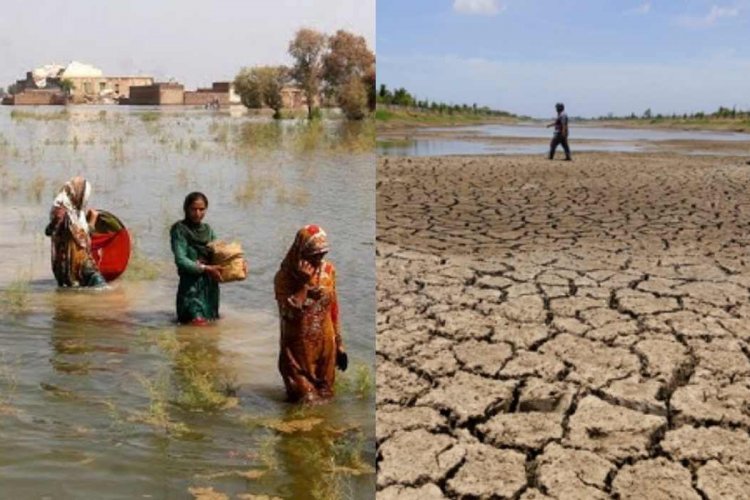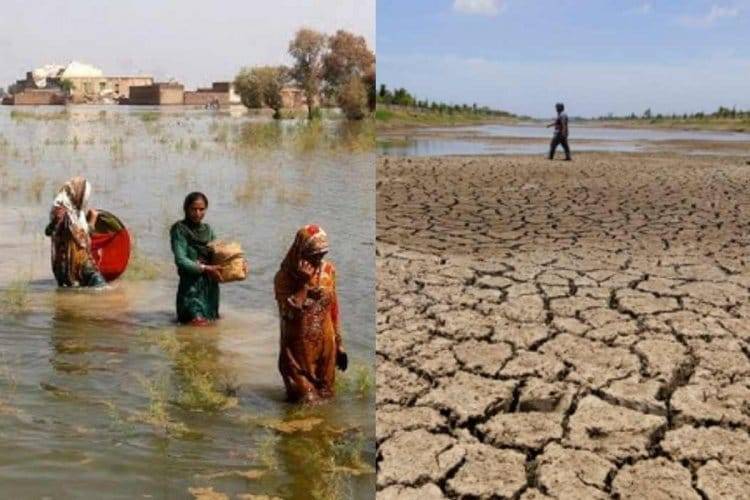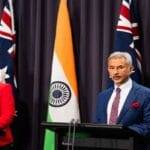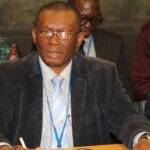Main Points In Hindi (मुख्य बातें – हिंदी में)
नीचे दी गई रिपोर्ट के मुख्य बिंदु हैं:
-
जलवायु खतरों की पहचान: विश्व बैंक की एक रिपोर्ट में बताया गया है कि 1.2 अरब लोग गंभीर जलवायु खतरों जैसे हीटवेव, बाढ़, तूफान और सूखे के जोखिम में हैं।
-
सतत विकास और अनुकूलन: रिपोर्ट में तेज़ और सतत आर्थिक विकास तथा लक्षित जलवायु अनुकूलन की आवश्यकता पर जोर दिया गया है, जिससे कमजोर लोगों की संख्या को कम किया जा सके।
-
धनी और विकासशील देशों की भूमिका: धनी देशों को अपने बुनियादी ढांचे को उन्नत करने की आवश्यकता है, जबकि विकासशील देशों के पास जलवायु-लचीली प्रणालियां विकसित करने का अवसर है।
-
सामाजिक सुरक्षा और स्वास्थ्य प्रणालियाँ: जलवायु परिवर्तन से प्रभावित लोगों की सहायता के लिए सामाजिक सुरक्षा जाल को मजबूत करने, स्वास्थ्य प्रणालियों का विकास, और जलवायु विरोधी बीमा की पहुंच को सुधारने पर ध्यान केंद्रित किया गया है।
- सफलता की कहानियाँ: रिपोर्ट में विभिन्न देशों में सफल जलवायु अनुकूलन प्रयासों के उदाहरण दिए गए हैं, जैसे भारत का हीट एक्शन प्लान और बांग्लादेश में बेहतर मौसम पूर्वानुमान, जो जलवायु खतरों से रक्षा में मदद कर रहे हैं।
Main Points In English(मुख्य बातें – अंग्रेज़ी में)
Here are the main points from the World Bank report highlighted in your request:


-
Climate Threats Affecting Billions: The report indicates that 1.2 billion people globally are at risk from severe climate threats such as heatwaves, floods, storms, and droughts, highlighting the urgent need for sustainable economic development and targeted climate adaptation.
-
Economic Growth and Adaptation: Countries that invest in economic growth and resilience can significantly reduce the number of vulnerable individuals. An increase in per capita GDP by 10% could potentially protect 100 million people from serious climate risks.
-
Tailored Climate Policies Needed: The report stresses that climate-informed policies must be tailored to the unique circumstances of each country. Wealthy nations should upgrade existing infrastructure, while developing countries have the opportunity to establish climate-resilient systems from the ground up.
-
Focus on Vulnerable Populations: Climate change disproportionately affects the poorest nations. The World Bank aims to enhance social safety nets while strengthening food systems, water resources, and biodiversity to protect communities.
- Support for Climate Risk Mitigation: The World Bank is assisting over 60 countries in identifying climate risks and implementing solutions, contributing to vital development gains and helping communities adapt to climate challenges through various climate interventions.
Complete News In Hindi(पूरी खबर – हिंदी में)

विश्व बैंक की एक रिपोर्ट इस बात पर प्रकाश डालती है कि 1.2 अरब लोगों को जलवायु संबंधी खतरों का खतरा है और इसके लिए सतत आर्थिक विकास और लक्षित जलवायु अनुकूलन की आवश्यकता है।
विश्व बैंक समूह की एक रिपोर्ट से पता चलता है कि वैश्विक स्तर पर 1.2 बिलियन लोग हीटवेव, बाढ़, तूफान और सूखे जैसे गंभीर जलवायु खतरों के संपर्क में हैं। शीर्षक “चुनौती का सामना करना: जलवायु अनुकूलन और लचीलापन हासिल करने के लिए सफलता की कहानियां और रणनीतियाँ,” रिपोर्ट इन प्रभावों को कम करने के लिए तेज़, टिकाऊ आर्थिक विकास और लक्षित जलवायु अनुकूलन की आवश्यकता पर जोर देती है।
रिपोर्ट के अनुसार, जो देश आर्थिक रूप से बढ़ते हैं और लचीलेपन में निवेश करते हैं, वे अत्यधिक कमजोर लोगों की संख्या को कम कर सकते हैं। प्रति व्यक्ति सकल घरेलू उत्पाद में 10 प्रतिशत की वृद्धि से 100 मिलियन लोगों को गंभीर जलवायु खतरों से बचने में मदद मिल सकती है। हालाँकि, यह प्रत्येक देश की परिस्थितियों के अनुरूप जलवायु-सूचित नीतियों की आवश्यकता पर बल देता है। धनी देशों को मौजूदा बुनियादी ढांचे को उन्नत करना चाहिए जबकि विकासशील देशों के पास शुरू से ही जलवायु-लचीली प्रणाली बनाने का अवसर है।
विश्व बैंक के वरिष्ठ प्रबंध निदेशक, एक्सल वैन ट्रॉट्सेनबर्ग ने कहा, “जलवायु परिवर्तन का खतरा सभी देशों को प्रभावित करता है, लेकिन दुनिया के सबसे गरीबों के लिए विशेष रूप से गंभीर है। हमारा ध्यान सामाजिक सुरक्षा जाल को बढ़ाते हुए खाद्य प्रणालियों, जल संसाधनों और जैव विविधता को मजबूत करने पर है।
विश्व बैंक समूह की जलवायु कार्रवाई में अधिक समुदायों को जलवायु खतरों से बचाना, देशों को प्रारंभिक चेतावनी प्रणाली विकसित करने में सहायता करना, जलवायु झटकों से खतरे में पड़े समुदायों और व्यवसायों के लिए बीमा तक पहुंच में सुधार करना और त्वरित संकट प्रतिक्रिया के लिए स्वास्थ्य देखभाल प्रणाली स्थापित करना शामिल है। पहली बार, विश्व बैंक समूह एक नए कॉर्पोरेट स्कोरकार्ड के हिस्से के रूप में इन जलवायु हस्तक्षेपों पर प्रगति को माप रहा है, जो जवाबदेही के पैमाने के रूप में कार्य करेगा और मापेगा कि यह अत्यधिक गरीबी को समाप्त करने और साझा समृद्धि को बढ़ावा देने के अपने मिशन को कैसे पूरा करता है। रहने योग्य ग्रह.
इसके अलावा, अपनी देश की जलवायु और विकास रिपोर्ट के माध्यम से, विश्व बैंक 60 से अधिक देशों को जलवायु जोखिमों की पहचान करने और समाधान लागू करने में सहायता कर रहा है, जिससे समुदायों को महत्वपूर्ण विकास लाभ सुरक्षित करने और जलवायु चुनौतियों के अनुकूल होने में मदद मिल रही है।
Complete News In English(पूरी खबर – अंग्रेज़ी में)



A report from the World Bank highlights that 1.2 billion people face threats from climate-related dangers, emphasizing the need for sustainable economic growth and targeted climate adaptation.
A report from the World Bank Group reveals that globally, 1.2 billion people are at risk from severe climate threats like heatwaves, floods, storms, and droughts. Titled “Facing the Challenge: Success Stories and Strategies for Climate Adaptation and Resilience,” the report stresses the urgent need for fast, sustainable economic development and focused climate adaptation to mitigate these impacts.
According to the report, countries that invest in economic growth and resilience can reduce the number of people who are highly vulnerable to climate dangers. A 10% increase in GDP per person could help 100 million people escape serious climate threats. However, this calls for climate-informed policies tailored to each country’s unique situation. Wealthy nations should upgrade their existing infrastructures while developing countries have the chance to build climate-resilient systems from the ground up.
Axel van Trotsenburg, the World Bank’s Senior Managing Director, stated, “The threat of climate change affects all countries, but it is especially severe for the world’s poorest. Our focus is on strengthening food systems, water resources, and biodiversity while expanding social safety nets.”
The World Bank Group’s climate actions include protecting more communities from climate dangers, helping countries develop early warning systems, improving access to insurance for communities and businesses vulnerable to climate shocks, and establishing healthcare systems for quick crisis responses. For the first time, the World Bank Group is measuring progress on these climate interventions through a new corporate scorecard, which will serve as a tool for accountability and assess how it fulfills its mission to eliminate extreme poverty and promote shared prosperity for a livable planet.
Additionally, through its country climate and development reports, the World Bank is assisting over 60 countries in identifying climate risks and implementing solutions, helping communities secure important development benefits and adapt to climate challenges.
The report also includes real-world examples of successful climate adaptation efforts. For instance, in India, the Ahmedabad Heat Action Plan saved over 2,000 lives in its first two years through early warnings and health campaigns. Niger’s adaptive social safety system provides cash assistance during droughts, improving food security and welfare. Improved weather forecasting in Bangladesh reduced crop losses from storms by up to 75%. Utilities in Brazil and Albania are investing in nature-based resilience solutions to ensure reliable electricity supply.




